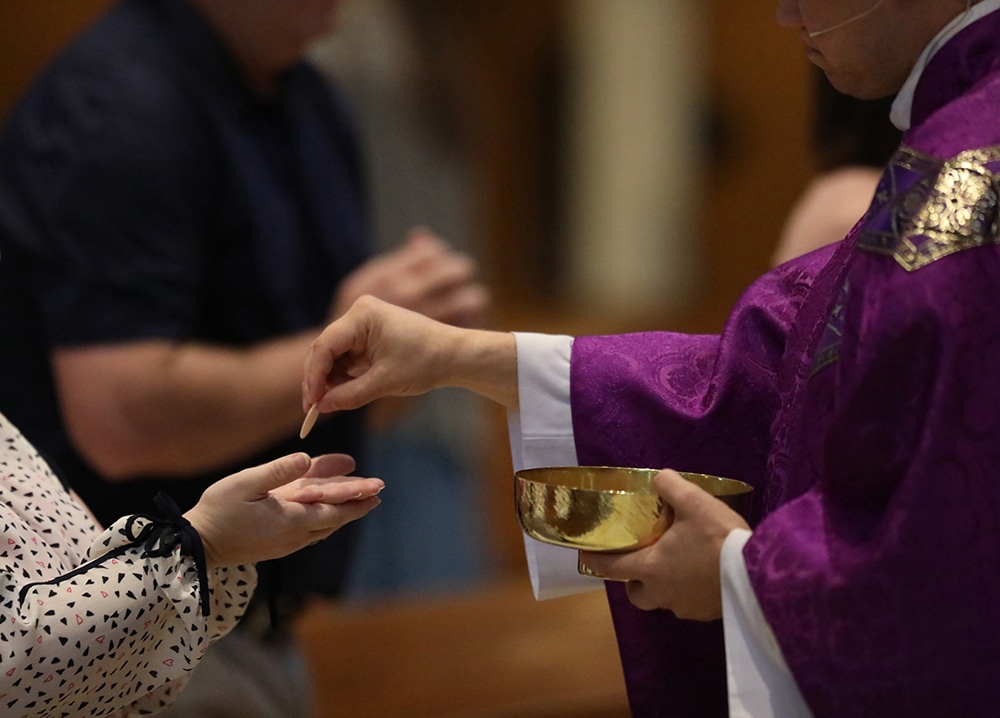 “And on the third day, he rose again from the dead. …”
“And on the third day, he rose again from the dead. …”
This confession of faith in the Apostle’s Creed is everything. Jesus Christ is risen from the dead. It is why we gather on Sunday mornings to offer the Eucharistic sacrifice, why we recognize the hidden presence of Our Lord in the hungry and thirsty.
And yet, what happened in the Resurrection?
On the Second Sunday of Lent each year, we turn our gaze to the Transfiguration of Christ. In Mark, the transfiguration follows upon the proclamation that Jesus is the Messiah, the anointed one, who has come to die.
Jesus leads Peter, James and John to a high mountain.
| February 28 – Second Sunday of Lent |
|---|
|
Gn 22:1-2, 9, 10-13, 15-18
Ps 116:10, 15, 16-17, 18-19
Rom 8:31-34
Mk 9:2-10
|
There, the three disciples see Jesus for who he is. His very person becomes dazzling white. He appears with both Moses and Elijah. Moses, the great lawgiver whose face was radiant with the presence of God, and Elijah, who was lifted into the heavens.
Peter wants to dwell on this mountain permanently. The three disciples are struck with terror and wonder alike, longing to adore God made manifest.
A cloud of divine presence then descends. And the disciples hear, “This is my beloved Son. Listen to him” (Mk 9:7).
With these words, Jesus is now alone. His body appears as it did at his baptism, at his temptation in the desert, and in his public teaching.
Jesus instructs the disciples to keep quiet about this moment until the Son of Man has risen from the dead. The evangelist then tells us, “So they kept the matter to themselves, questioning what rising from the dead meant” (Mk 9:10).
What does rising from the dead mean?
Perhaps, we would do well to attend to the words of the Father at the Transfiguration. This is my beloved Son.
In Genesis, we hear the story of the too-close-for-comfort sacrifice of Isaac. It is a text clouded in mystery. Why would God ask Abraham to sacrifice “your son Isaac, your only one, whom you love” (Gn 22:2)? Why this test? Why the beloved son?
If we too quickly say, “Well, God wanted to know if Abraham really loved him,” we have given a dreadful answer. Is God that needy? Is God that petty?
To the Christian reader, the almost sacrifice of Isaac only makes sense considering the resurrection of the Beloved Son. Jesus Christ obediently gives himself over to be sacrificed upon the cross. He is the supreme beloved Son.
And still, Jesus experiences the anguish of human sin, the hatred of the human heart directed toward him. And yet, Jesus loves. He loves unto the end.
The Father has sent his Son for this mission, for the redemption of the world. An act of love that leads to the cross, to insults and spitting, and to his death.
And yet, that death is not the end.
What does rising from the dead mean?
It means that the Father will not let the last word be death. Love is stronger than death (cf. Song 8:6).
The disciples cannot understand this yet, because they have not yet gazed upon the suffering of this beloved Son.
We have. And yet, this Lent we must follow Christ once more to the cross that redeems the world.
If we are to celebrate the Resurrection on Easter, we must gaze upon Our Lord, see his suffering and the suffering of our neighbor here and now.
Only then can we dare to confess with trembling hearts ablaze with love, “He is risen.”
Such glory revealed on that high mountain, and yet nothing compared to what we shall see when the Beloved Son is lifted high upon the tree, drawing all things to himself.
Timothy P. O’Malley, Ph.D., is the director of education at the McGrath Institute for Church Life at the University of Notre Dame.







